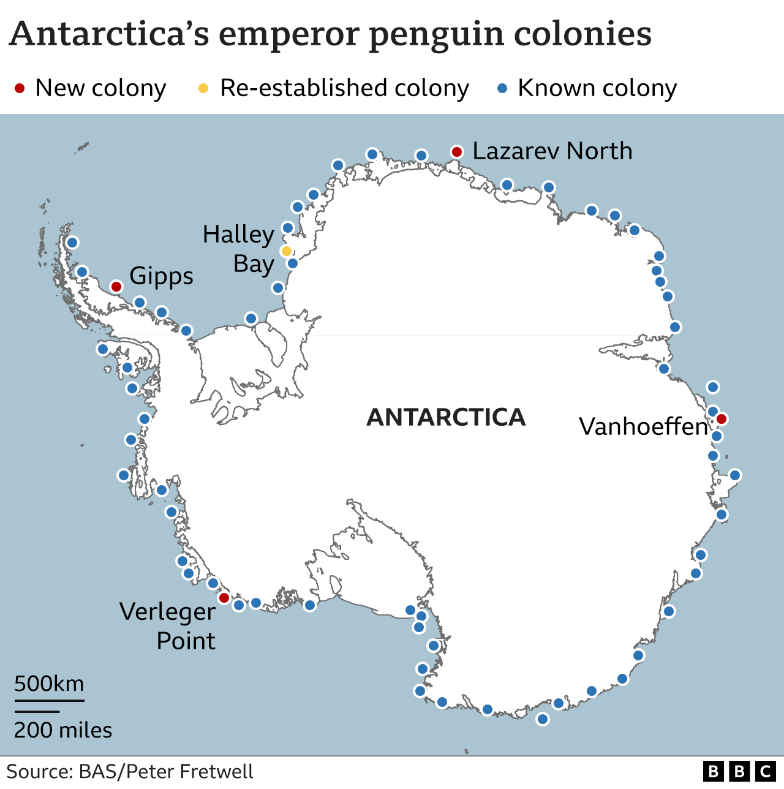Description

Disclaimer: Copyright infringement not intended.
Context
- Four new emperor penguin colonies have been identified in Antarctica from satellite imagery.

Emperor Penguin
Taxonomy and Classification:
- Scientific Name: Aptenodytes forsteri
- Family: Spheniscidae (Penguins)
Physical Characteristics:
- Size: Largest of all penguin species, standing around 1.15 meters (3.8 feet) tall.
- Weight: Adults can weigh between 22 to 45 kilograms (49 to 99 pounds).
- Coloration: Distinctive black and white plumage with a yellowish-gold patch on their chest.
- Adaptations: Streamlined bodies, flipper-like wings for swimming, and a layer of blubber for insulation.
Distribution:
- Habitat: Native to Antarctica, specifically the coastal areas and surrounding ice shelves.
- Breeding Grounds: Emperor penguins are known for their unique breeding habits and are often found on sea ice during the breeding season.

Reproduction and Breeding:
- Breeding Cycle: Emperor penguins have a complex breeding cycle, involving the formation of large colonies, courtship rituals, and cooperative parenting.
- Nesting: Females lay a single egg, which is then incubated by the males in a coordinated manner, balancing it on their feet and keeping it warm using a brood pouch.
Life Cycle:
- Chick Rearing: Both parents contribute to chick rearing, taking turns to protect and feed the chicks until they are ready to fend for themselves.
- Fledging: Emperor penguin chicks fledge and enter the water for the first time when they are about 50 to 60 days old.
Adaptations to Extreme Conditions:
- Cold Tolerance: Specially adapted to withstand extremely cold temperatures in Antarctica.
- Thermoregulation: Huddle together in large groups to conserve heat during severe cold.
Conservation Status:

- Threats: Climate change, loss of sea ice, and disturbances to their breeding grounds pose significant threats to Emperor penguin populations.
|
PRACTICE QUESTION
Q. Consider the following statements regarding the Emperor Penguin (Aptenodytes forsteri):
- Emperor Penguins are the smallest among all penguin species.
- Their breeding cycle involves females incubating the eggs while males provide food for the chicks.
- Emperor Penguins are primarily found in the Arctic region.
Which of the statements above is/are correct?
A) Only 1
B) 2 and 3
C) Only 3
D) 2 only
Answer: D) 2 only
Explanation: Statement 1 is incorrect as Emperor Penguins are the largest among all penguin species. Statement 3 is incorrect as Emperor Penguins are primarily found in Antarctica, not the Arctic region. Statement 2 is correct as their breeding cycle involves females laying eggs, which are then incubated by males, who also provide food for the chicks.
|














